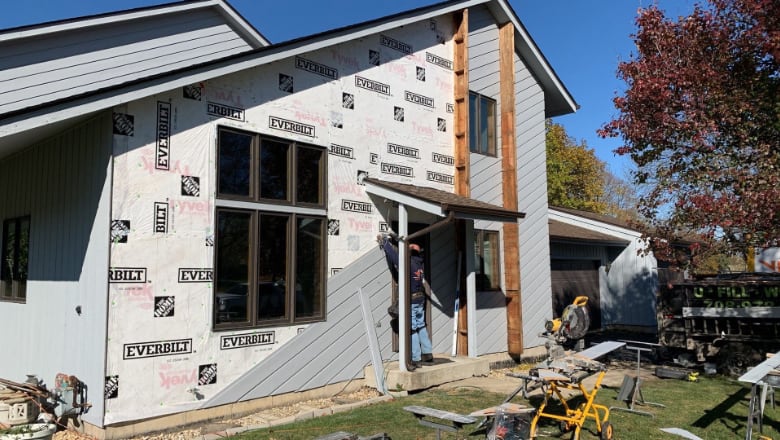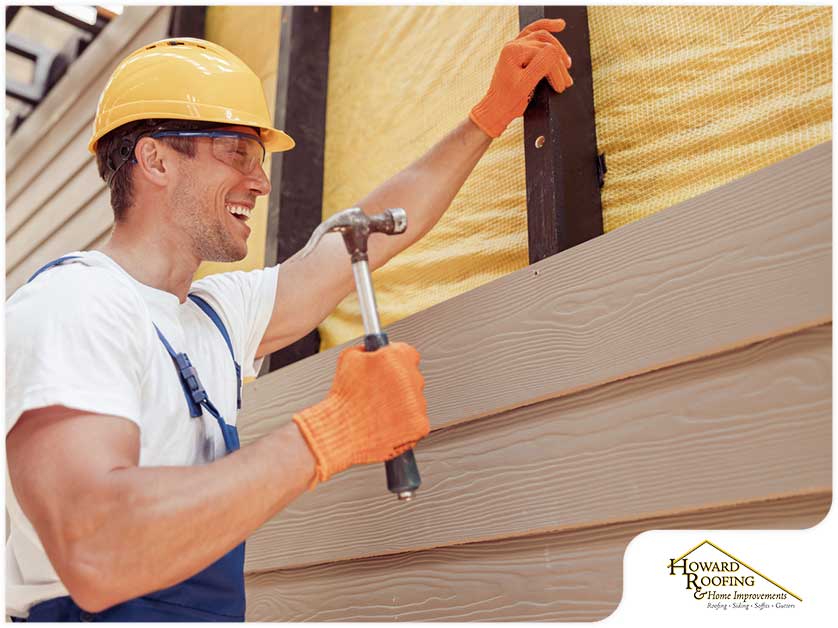The Essential Guide to the Numerous Kinds Of Home Siding and Their Unique Benefits
In the world of home improvement, choosing the right home siding is an essential choice that influences both aesthetic appeal and practical efficiency. The variety of materials offered, such as timber, vinyl, fiber metal, cement, and brick, each offer distinct advantages that satisfy various demands and preferences. Recognizing these differences can significantly enhance the long life and worth of a building - morris siding contractor. With so lots of alternatives to take into consideration, which siding material truly stands out for your specific project? Exploring these choices can result in notified decisions that align with both style and practicality.
Timber Exterior Siding
Wood house siding, a preferred option for property exteriors, offers a timeless visual that incorporates all-natural charm with structural honesty. This home siding material is readily available in different styles, including clapboard, roof shingles, and board-and-batten, allowing home owners to personalize their façade to match their design preferences. Timber exterior siding is usually crafted from durable varieties such as cedar, redwood, or yearn, which are known for their resilience and capacity to endure ecological stressors.
Among the primary advantages of wood house siding is its superb insulation buildings, which can add to power efficiency and lower heating prices. Additionally, timber siding is naturally degradable, making it an eco-friendly alternative when sourced sustainably. Routine upkeep, consisting of painting or staining, can extend its life-span and improve its look, allowing property owners to maintain the natural beauty of the wood.
Nonetheless, potential disadvantages consist of sensitivity to pests, rot, and weather condition damages, demanding sufficient treatment and upkeep - morris siding contractor. Regardless of these concerns, when properly taken care of, timber house siding can provide a lovely and sturdy option that boosts the personality of a home while supplying a cozy, welcoming ambience

Vinyl House Siding
Vinyl house siding has arised as a leading option for home owners looking for a low-maintenance outside alternative that integrates resilience and price. This versatile product is crafted from polyvinyl chloride (PVC), making it resistant to numerous weather, including wetness and UV rays. Because of this, plastic exterior siding does not warp, rot, or discolor, guaranteeing durable aesthetic charm.
Among the primary advantages of plastic exterior siding is its considerable series of styles and colors, enabling house owners to achieve the preferred seek their building without the need for regular repainting. Furthermore, plastic siding is simple to mount, which can significantly decrease labor expenses throughout building and construction or renovation projects.
Vinyl home siding additionally adds to power efficiency. Numerous choices attribute insulation backing, which enhances thermal performance, helping to maintain comfortable indoor temperatures and potentially lowering energy bills. Moreover, its smooth surface assists in simple cleansing, needing just regular washing with a garden hose pipe to remove dust and particles.
Fiber Concrete Home Siding
Fiber cement exterior siding has acquired traction amongst home owners and builders alike due to its remarkable mix of longevity and visual adaptability. Composed of a blend of sand, cellulose, and cement fibers, this siding alternative is crafted to stand up to extreme weather, including high winds, hefty rain, and temperature level variations, making it a long-lasting selection for property exteriors.

One of the key benefits of fiber cement home siding is its resistance to pests, such as termites, and its non-combustible nature, offering improved fire safety. morris siding contractor. Furthermore, it is readily available in a wide selection of colors, appearances, and styles, enabling homeowners to accomplish their wanted visual without sacrificing performance
One more benefit is its low upkeep needs; fiber cement siding commonly requires painting or staining every 5-10 years, which is less regular than various other products. Furthermore, its longevity contributes to a lower general price of possession, as it reduces the need for regular repair services or substitutes.
Ultimately, fiber cement home siding represents an outstanding investment for those seeking a resilient, attractive, and versatile exterior option, combining both form and feature to boost the home's aesthetic charm.
Metal Exterior Siding
The allure of metal house siding link hinges on its durable toughness and modern-day aesthetic appeal, making it a popular selection for modern design. Available in materials such as light weight aluminum and steel, steel house siding uses a variety of surfaces and colors, allowing homeowners to attain a customized look that complements their layout vision.

Energy efficiency is another significant advantage, as many steel house siding items are created with insulation alternatives that assist manage interior temperature levels. This can lead to lowered power prices gradually. In addition, steel home siding is often recyclable, making it an eco pleasant option for sustainability-minded house owners.
The setup process for metal siding can be reasonably simple, leading to a quicker turnaround time for building and construction tasks. Generally, metal exterior siding combines capability and design, making it a useful alternative for those looking for a visually enticing and enduring exterior coating.
Brick and Stone House Siding
Brick Check This Out and stone exterior siding stands apart as an ageless selection that boosts the visual appeal of any kind of home. Known for their sturdiness and low maintenance, these products provide an extraordinary return on financial investment while raising the residential property's curb allure. Available in numerous colors, appearances, and patterns, brick and rock can be tailored to fit varied architectural designs, from traditional to modern-day.
Among the main look what i found advantages of block and rock exterior siding is their power performance. Both materials have all-natural insulating residential or commercial properties that assist control interior temperature levels, potentially decreasing home heating and air conditioning costs. Additionally, they provide remarkable fire resistance contrasted to various other siding options, adding to boosted safety and security.
An additional advantage is their durability. Block and rock can last for years, usually needing very little maintenance past periodic cleaning. Unlike wood exterior siding, they are invulnerable to insects and rot, guaranteeing a resilient outside that stands up to the aspects.
Final Thought
In recap, the option of home siding considerably impacts a home's visual appeal, power efficiency, and upkeep requirements. Each type of house siding-- whether wood, plastic, fiber cement, steel, or brick and stone-- uses unique advantages customized to different home owner preferences and ecological problems.
One of the primary advantages of wood home siding is its excellent insulation residential or commercial properties, which can add to power efficiency and reduced home heating expenses. Furthermore, wood house siding is eco-friendly, making it an environmentally friendly option when sourced sustainably.One of the primary benefits of steel home siding is its resistance to different environmental elements.Energy performance is one more substantial benefit, as numerous metal house siding items are designed with insulation choices that aid regulate indoor temperatures. Each type of home siding-- whether timber, plastic, fiber brick, metal, or cement and stone-- provides special benefits tailored to different property owner preferences and environmental conditions.
Comments on “Your Go-To Morris Siding Contractor for All Residential Siding Needs”